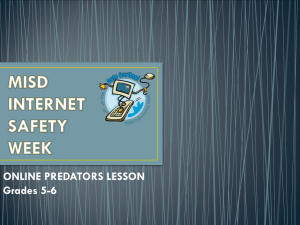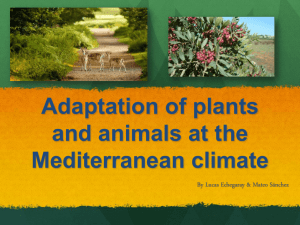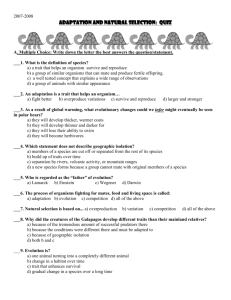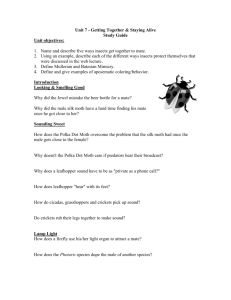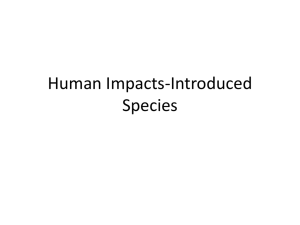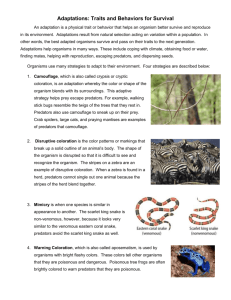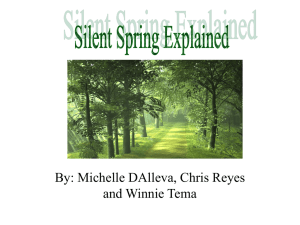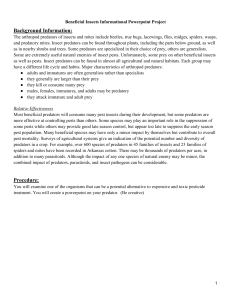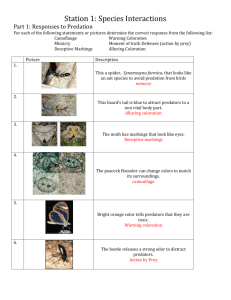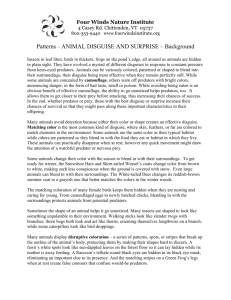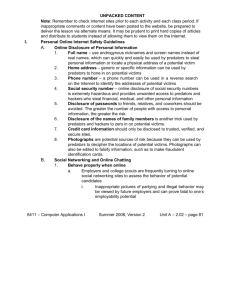Structural Adaptations PowerPoint
advertisement
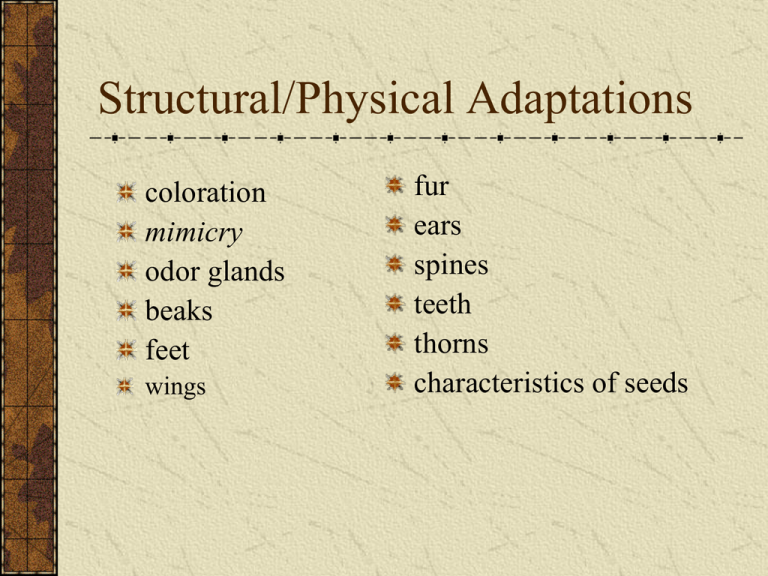
Structural/Physical Adaptations coloration mimicry odor glands beaks feet wings fur ears spines teeth thorns characteristics of seeds Coloration Using color to hide from predators or warn predators not to eat that animal. They can also be used to attract a mate or insects and other animals to aid in pollination. Flowers use color to attract insects and other animals to aid in pollination Mimicry The resemblance of one organism to another or to an object in its surroundings for concealment and protection from predators. Odor glands Animals and plants use scents to attract mates, fend off predators and rivals, and attract insects and other animals to help them pollinate other flowers. Beaks These are a birds mouth. The shape and size are related to how they get their food. Feet Animals have feet that have adapted to their needs. Examples are feet for swimming, catching prey, holding on to surfaces, running, holding great weights, balancing, and weight distribution on soft surfaces like sand, mud , and snow. Wings This adaptation allows animals to fly, which helps them get food, flee and live far from predators, balance and swim for some. Many even use them as camouflage. Fur Fur’s purpose is to insulate from cold or too much heat, as camouflage, to signal danger, to protect the skin, and to sense the immediate surroundings. Ears Ears are used for hearing sounds from a distance, navigation, listening for mating calls, receiving communications sounds, and receive warnings of danger. Spines These are used to keep animals up right, defense, swimming, and protecting the spinal cord. Teeth Different kinds of teeth have different jobs. Some are sharp for biting and tearing meat. Others are flat and square for chewing plants. Some have needle like teeth for injecting venom. Some even use them for defense and the right to have a mate. Thorns Thorns are a hard sharp part of a plants stem meant to protect the plant stem from harm or from animals eating it fruit. Umbrella Thorn Tree Characteristics of Seeds Plants have developed lot of ways to spread their seed around their environments. Four major ways are: by air, by water, by animals, and by land. Light thin fibers One wing buoyant coconut Animals eat or carry fruit and seeds to other places on or in their bodies. Some have hard shells that protect them when they fall to the ground and may even bounce allowing them to roll to a new location.

